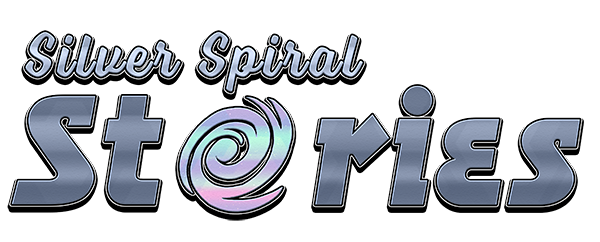The following is an entry in Meilo Thench’s ongoing fiction series Silver Spiral Archives – an in-universe series of writings by researcher Meilo Thench. The original version of this article was published on Wattpad but has since been republished here and features corrections, enhancements, and internal links when relevant.
Comments are open for inquiries, questions, and corrections.


No species quite represents the downside of space travel like the simple Nudrik. This alien pest is small, voracious, and extremely territorial; the Nudrik species has spread from planet to planet throughout the known galaxy.
A Nudrik is a small, flightless avioid that resembles a ball-like bird’s head with small bird’s feet, a pronounced beak, and long-clawed forearms extending out from the body’s side. The average Nudrik measures about 6 to 8 inches tall and weighs between 15 and 20 pounds. Their rounded shape is mostly the result of layers of oily feathers.
Nudriks are omnivorous and hardy survivors as their rounded bodies provide layers of muscle, fat, and feathers to protect their compact array of organs. The Nudrik body plan seems to have enabled the species to survive space travel and adapt to myriad environments, with some instances of Nudriks stowing away in a vacuum for many hours.
Additionally, a Nudrik seems capable of eating just about anything as its stomach acids are highly effective at breaking down materials at a molecular level. Their beaks are strong, can crush bone, and chip away at metal and plasteel with minimal effort. Their claws have similar chitinous makeup as their beaks and can embed into most metals and plastics used in colonies. Naturally, these claws can be dangerous, and many an unfortunate traveler has been ambushed by pecking, clawing Nudriks who crawl all over perceived invaders in an attempt to scare them off.
Regarding their feathers, they cover oil glands in the skin that allow Nudriks to eliminate waste constantly. Though they feature a cloacal vent for general defecation, Nudriks secrete their waste passively for insulation and as a defensive measure. In instances of travel where the cloacal vent becomes a liability, the species will stick strictly to secreting through their glands. Naturally, a Nudrik does not have a pleasant odor. Further, injuries from bites, pecks, and slashes sustained from a Nudrik have the potential to carry heavy infection.

Interestingly, the makeup of their excrement, including their secretions, is inflammable. Many colonists have found entertainment in a game known as “Tindriks” where these pests are fired upon with low-powered blaster bolts in an attempt to light them on fire. Federation colonial law has made this practice illegal due to several colonies catching fire due to a rogue “Tindrik” fleeing toward a nest. However, many frontier colonies have begun to harvest the oils of Nudriks for cheap fuels. One would think that even a lowly pest such as a Nudrik can find supporters, but nobody on record has ever wanted to keep one as a pet or ever likely ever will.
The spread of the Nudrik can generally be attributed to lax cargo-inspection standards in the early era of colonization. Over the course of at least 1000 years of constant travel between worlds, the Nudrik have made a presence for themselves on hundreds of planets. A single pair of Nudriks of any gender can lay the foundations for an entire population as the species seems to be able to store genetic materials in a cloacal sack. During twice-yearly seasons Nudriks will gather to breed, and excess genetic material is stored for usage later by females. Interestingly, Nundriks of both genders will collect genetic material to be stored, but only the female of the species can lay a clutch of eggs.

Despite the species being so spread out, there has not been much in the way of differences in population, which leads some researchers, much to their chagrin, to suggest that the Nudrik is a pinnacle of evolution in their self-sustaining nature. Most spacers would disagree as Nudriks are widely considered annoying stowaways alongside the Crattlers, possibly exceeding them in pure disruption of day-to-day life. Many spacers engage in regular Nudrik sweeps, but the species has, over time, adapted to these measures through efficient hiding in spaces normally seen as inhospitable. Spacers often tell tales of chaos sewn by these pests, and there have been rumors of gigantic Nudriks being sighted in the wilderness of early colonies.




[…] Nudriks are widely considered the most significant pests of the Silver Spiral Galaxy. However, the chittering, disease-ridden alien rodent Crattlers are often considered contenders for that position. Many citizens of the galaxy think them to be far, far worse. The similarity in the spread of both species has often made galactic citizens question whether space travel is worth enabling these beings to move from planet to planet. […]